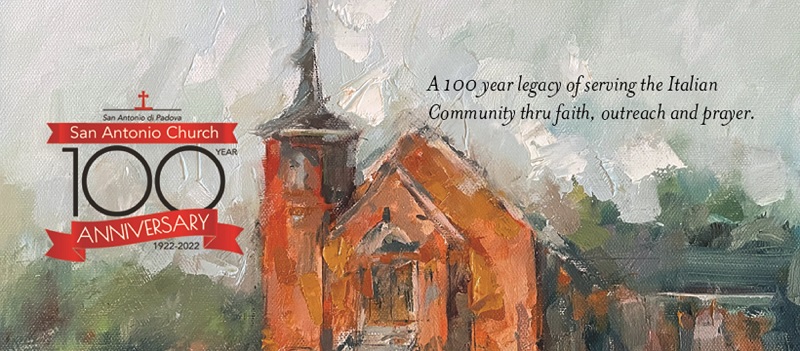We would like to thank everyone who has continued to contribute to the ongoing expenses of San Antonio Church by mailing in their weekly envelopes or by contributing electronically utilizing WeShare . The buttons at the bottom of this post allow you to make online donations directly to the listed account for San Antonio Church.
Weekly Bulletin June 11, 2023
by Terrie Evans
On Sunday, June 11th, our church celebrates Corpus Christi Sunday, the Feast that honors the Real presence of Christ in the Eucharist also known as the Solemnity of the Most Holy Body and Blood of Christ. Corpus Christi, Latin for the Body of Christ, is 60 days after Easter and the Sunday after the Most Holy Trinity. The Feast of Corpus Christi was proposed by Doctor of the Church, Thomas Aquinas to Pope Urban IV to create a day to focus on the joy of the Eucharist which is the Body and Blood and the Soul and Divinity of Jesus Christ. With the proposal and after the Eucharistic Miracle of Bolsena in 1263, the Pontiff established the feast of Corpus Christi as a Solemnity to include the whole Roman Catholic Church. This Eucharistic Miracle occurred at the time Pope Urban IV was living in Orvieto, Italy, when the German Priest, Fr. Peter was on his pilgrimage to Rome, stopped in Bolsena, Italy to celebrate Mass. Fr. Peter had just consecrated the Host when he noticed there was blood flowing from it. After the Mass was stopped, Fr. Peter traveled to the papal residence about 12 miles away. The Miraculous Host and the blood-stained linen altar cloth were investigated, and the authenticity was confirmed with Pope Urban IV establishing the Feast of Corpus Christi in August 1264. Pope Urban IV would enshrine the blood-stained Corporal (linen) relic in a silver and glass reliquary above the altar at the Cathedral of Orvieto. On the Feast of Corpus Christi, a major public holiday for the city of Orvieto, the Corporal of Bolsena along with the tapestry depicting the Miracle of Bolsena is paraded throughout the city. Many centuries later, the blood-stained Corporal of Bolsena is still venerated as a major relic in the Cathedral in Orvieto. The Renaissance Painter Raphael was commissioned to depict the Miracle of Bolseno for the left half of a large fresco in the Apostolic Room of the Vatican Palace titled, The Mass at Bolsena (1512-1514).
The practice of Eucharistic Processions on Corpus Christi began around the 14th Century and on this Sunday after parishes conclude their morning masses, many faithful will gather to pray and march with the Monstrance following the Benediction of the Blessed Sacrament. In Rome, Pope Francis will preside over the procession that will begin at the Archbasilica of St. John Lateran and conclude at the Basilica of Saint Mary Major with the Benediction. Pope Francis has said: “Every year the Feast of Corpus Christi invites us to renew the wonder and joy for this wonderful gift of the Lord, which is the Eucharist.” In Cincinnati, St. Teresa/St. William/St. Lawrence will have a Eucharistic Procession starting at 2:00PM at St. Teresa of Avila Church to march along the side streets to St. William Church. Please park your car at St. William School parking lot to board the shuttle bus taking you to St. Teresa Avila Church at 1:00PM.
Today, we also celebrate the feast day of our Patron, St. Anthony of Padua, (1195-1231), canonized in 1232 by Pope Gregory IX, one year after his death. St. Anthony’s one ambition was to convert Muslims to Christianity before joining the Franciscans in 1221 as an obedient young priest and kitchen assistant. By 1224, he was given permission to teach Theology to other Franciscans in Italy by St. Francis of Assisi. St. Anthony would become a much-revered missionary in France, Italy and Spain as a worker of miracles to those who sought his intercession. His followers referred to St. Anthony, as “wonder worker” and hammer of the heretics” with many miracles attributed to him during his life and since his death. He preached the Gospel throughout Lombardy while taking other teaching posts at the Universities of Montpellier and Toulouse in France but later returned his missionary work in Italy. After his death, a great Basilica was begun with domes and a bell tower built with Minarets in honor of the work he hoped to do converting Muslims in Morocco to become faithful Christians. The tomb of St. Anthony of Padua lies behind the altar of his chapel in the north transept of the Basilica di Sant Antonio. At mass on this Sunday, Fr. Bill Ferris will bless the St. Anthony Bread, a tradition San Antonio Church established since the start of our church in 1922. The loaves of St. Anthony Bread considered a Sacramental (sacred signs and objects possessing a likeness to the Sacraments) of the Church, reminds us of the devotion he had to the poor all through his life. All the donations and those monies placed on the ribbon of the St. Anthony statue will be given to the Franciscan Order for their many good works. These almsgivings are made in thanksgiving to God for the Blessings received through the prayers of St. Anthony of Padua.
